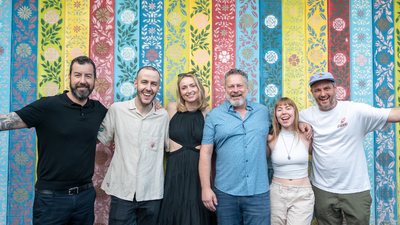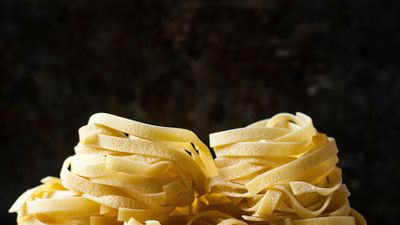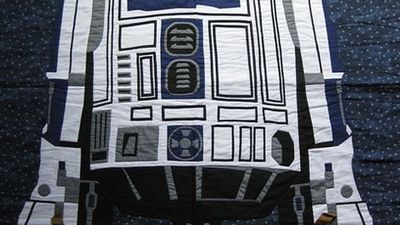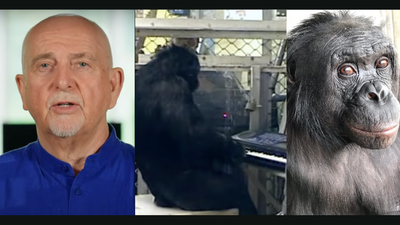MIT's D-Lab can turn a plastic baby bottle into lab equipment and refashion a toilet as a chlorination system. Here's how its low-cost, low-tech solutions are saving lives around the world.MIT is often thought of as a high-tech clubhouse, a play space for brilliant thinkers who churn out one world-changing innovation after the next. MIT brainiacs have brought us everything from vital advances in high-speed photography and internet architecture to robots with artificial intelligence. But not all of their solutions are mind-numbingly complex. What use is an electrical invention if you live in a community that doesn't have the reliable power to use it, or a fragile device in an area where it's almost impossible to find spare parts?MIT's D-Lab, an elite unit of low-tech mercenaries, addresses these concerns with solutions that dramatically affect the quality of people's lives in developing countries. "Our goal is always to do things in the simplest way possible," says D-Lab's director, Amy Smith, a mechanical engineer who won the prestigious Lemelson-MIT Student Prize for Invention in 2000 (she was the first woman to do so), and a MacArthur "genius"grant in 2004. "Designs are more likely to be successful if they're not complicated and requiring all sorts of support and infrastructure. But simple doesn't mean easy. It's a challenge to get to those ‘simple' solutions."She first realized that a skilled engineer could do a world of good in the developing world during the late 1980s, when she spent four years with the Peace Corps in Botswana. Now at D-Lab, Smith and an ever-changing roster of students develop no-nonsense technology for people in places like Honduras, Haiti, Brazil, India, and Zambia. Some of their inventions are already spreading through communities by word of mouth, while others are being studied by partner organizations for broader distribution. "We're not as well equipped to do dissemination as we would like," says Smith, who notes that D-Lab only has about 30 students at any one time. "We're interested in finding the right partners to move the technologies forward."

Water Chlorination Controller
what it doesMakes drinking water safe by tweaking faulty chlorination systemswhere it's in useHondurasWhen students from a D-Lab team visited a village in Honduras in 2004, they were soon alerted to a problem with the local water supply. The community stored its water, which was piped in from a spring, in a large holding tank. A smaller connected tank of chlorine solution was supposed to drip into the holding tank at a steady rate, but the valve managing the chlorine was not doing its job-sometimes it added too much, other times, not enough.Working with the local plumber, the D-Lab team found inspiration in the unlikeliest of places-the flush toilet. With supplies that cost just a few dollars from the local pharmacy and hardware store-a plastic gas container, the clamp from an intravenous drip, and a float valve normally used in toilets-they had all the materials they needed. They used the gas can as a reservoir for the chlorine before it was released into the water supply; the float valve ensured that the reservoir was kept filled at a nearly constant level. As the reservoir emptied, the float opened a valve to refill it, just like in a toilet. The pressure on the intravenous clamp, which was attached to the bottom of the gas can, was therefore kept constant, creating a steady, reliable flow of chlorine solution-and safer water. "When we went back the following year, the man we had worked with had trained several other technicians from neighboring villages," says Smith. "The solution spread to five other communities, then 13, and now it's close to 50."
Screenless Hammermill
what it doesProcesses flour through aerodynamicswhere it's in useSenegal, Haiti, LesothoTurning grain into flour requires a surprising amount of force. When done by hand, it takes about half an hour to process a kilogram of flour; when done by a motorized hammermill, it takes about a minute. Many communities in developing countries have access to conventional hammermills, which pulverize grains, but there's a severe design problem: The machines rely on a fragile screen to separate the flour from the larger waste particles, and those screens frequently get clogged and break. Replacement screens are expensive, if they can be acquired at all, so the mills often end up sitting unused. While still a student at MIT, Smith addressed this problem, designing a screenless hammermill. Others had tried to create such a machine before, but with limited success. After studying the airflow in mills, Smith devised a system that allowed fine particles (the flour) to be blown into a collector, while larger particles remained inside the mill. Over the following years, D-Lab helped test the design in Senegal, where crafts people built the machines with local tools and materials. The result? A reliable screenless mill that can be built and repaired locally, uses about 70 percent less electricity, and costs a quarter of the price.
While still a student at MIT, Smith addressed this problem, designing a screenless hammermill. Others had tried to create such a machine before, but with limited success. After studying the airflow in mills, Smith devised a system that allowed fine particles (the flour) to be blown into a collector, while larger particles remained inside the mill. Over the following years, D-Lab helped test the design in Senegal, where crafts people built the machines with local tools and materials. The result? A reliable screenless mill that can be built and repaired locally, uses about 70 percent less electricity, and costs a quarter of the price.
Low-Cost Water Test
what it doesHacks expensive water testing systems to offer an affordable alternativewhere it's in useHaiti, Honduras, PakistanCommunities in developing countries may have access to water, but they often can't tell whether or not it's safe to drink. Water-testing devices that use replaceable filters to check for dangerous bacteria are available; but they cost a relative fortune, anywhere from $800 to $1,200. Since the filter paper-not the lab equipment-is the most important part of the kits, the D-Lab team set out to find a low-cost replacement for the equipment. They found it in plastic baby bottles. The mouths of baby bottles turned out to be only a few millimeters wider than the circular filter papers, so with a few tweaks, the team was able to customize the bottles for their own purposes. A disposable, sterile bottle insert holds the water that will be tested (without contaminating the bottle, so it can be reused), and the filter paper is placed on top, sandwiched between washers, which are held in place by the screw-top cap. The bottle is then turned upside down, and the water is sucked through the filter by a syringe attached to the bottle's spout. Once removed, the filter is placed in a petri dish and left to process in an incubator for 24 hours. D-Lab students are already using the invention in the field; the kit has an up-front cost of just $10, and individual tests cost only a few cents each.
The mouths of baby bottles turned out to be only a few millimeters wider than the circular filter papers, so with a few tweaks, the team was able to customize the bottles for their own purposes. A disposable, sterile bottle insert holds the water that will be tested (without contaminating the bottle, so it can be reused), and the filter paper is placed on top, sandwiched between washers, which are held in place by the screw-top cap. The bottle is then turned upside down, and the water is sucked through the filter by a syringe attached to the bottle's spout. Once removed, the filter is placed in a petri dish and left to process in an incubator for 24 hours. D-Lab students are already using the invention in the field; the kit has an up-front cost of just $10, and individual tests cost only a few cents each.
Phase-Change Incubator
what it doesCreates a warm environment to test for bacteriawhere it's in useHaiti, Honduras, PakistanInexpensive water tests are of little use if you don't have an incubator in which to process them. Electric incubators are normally used to hold samples at 98.6 degrees Fahrenheit (the temperature of the human body) for 24 hours, in order to check for the growth of harmful bacteria. The problem is that the communities that lack clean water and conventional water-testing systems are the same communities that usually don't have reliable electricity to run an incubator. Portable, battery-powered models are available, but cost $1,500 to $2,500, and tend to be fragile. Finding yet another work-around, one of Smith's earliest inventions was the phase-change incubator, which is used by D-Lab students and officials in host countries to test local water supplies. It is also being considered for possible vaccine trials in Pakistan. It's essentially a small, portable cooler of the sort you might use for family picnics, but instead of food, it holds plastic balls filled with chemicals that have a melting point of about 99 degrees Fahrenheit. To fire up the incubator, people just have to leave the balls out in the sun, or heat them in hot water, until the chemical inside melts. The balls-which will remain at the correct temperature for a full day-are re-turned to the insulated cooler, along with water tests in petri dishes.
Finding yet another work-around, one of Smith's earliest inventions was the phase-change incubator, which is used by D-Lab students and officials in host countries to test local water supplies. It is also being considered for possible vaccine trials in Pakistan. It's essentially a small, portable cooler of the sort you might use for family picnics, but instead of food, it holds plastic balls filled with chemicals that have a melting point of about 99 degrees Fahrenheit. To fire up the incubator, people just have to leave the balls out in the sun, or heat them in hot water, until the chemical inside melts. The balls-which will remain at the correct temperature for a full day-are re-turned to the insulated cooler, along with water tests in petri dishes.
Alternative Charcoal
what it doesUses local waste to create cleaner cooking fuelswhere it's in useGhana, Haiti, IndiaAnother serious, surprising problem in developing countries is indoor air pollution caused by cooking fires, which can lead to serious ailments and death. D-Lab, working in Haiti-where firewood harvesting has led to heavy deforestation-set out to find an alternative fuel source that didn't require wood and didn't cause respiratory damage. After a false start with recycled paper, the team members turned to bagasse, waste left over from the processing of sugarcane that was previously considered worthless. They were able to carbonize this material by sealing it in a low-oxygen, heated environment-a makeshift kiln constructed from an oil drum. After creating charcoal particles from the bagasse, they went in search of a binder that would allow them to make proper briquettes. They found their answer in a sticky porridge known as konkonte, which is made from cassava flour and also appens to be a perfectly combustible glue. The finished charcoal briquettes can be formed by hand, but D-Lab has also been developing low-cost briquette-making devices that compress the material and produce tidy pucks. The final product burns longer and cleaner than wood-based charcoal, delivering environmental, health, and economic benefits (the surplus briquettes can be sold). The World Bank is sponsoring a broader pilot project in Haiti this year, and a team of MIT students is working to commercialize the technology and deliver it across the country. The concept has also been exported to India, where people use wheat and rice straw, and to Ghana, where they are carbonizing corncobs. It will soon be introduced in Tanzania, Pakistan, and Brazil.
The finished charcoal briquettes can be formed by hand, but D-Lab has also been developing low-cost briquette-making devices that compress the material and produce tidy pucks. The final product burns longer and cleaner than wood-based charcoal, delivering environmental, health, and economic benefits (the surplus briquettes can be sold). The World Bank is sponsoring a broader pilot project in Haiti this year, and a team of MIT students is working to commercialize the technology and deliver it across the country. The concept has also been exported to India, where people use wheat and rice straw, and to Ghana, where they are carbonizing corncobs. It will soon be introduced in Tanzania, Pakistan, and Brazil.












